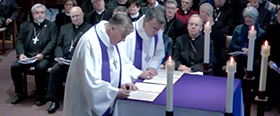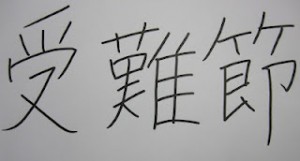Christine Eige is an ELCA teaching missionary in Japan. To support Christine, or another of the ELCA’s nearly 250 missionaries, go to www.elca.org/missionarysponsorship.
We are entering the season of Lent and are focusing our eyes on the cross. Recently, at Bible study, I had the experience of explaining Lent to someone who is not a Christian. I said that Lent is a time to remember how Jesus died on the cross; this sacrifice made it possible for people to know God better and to be with him after they die. It is sad because Jesus had physical and emotional pain, but the story didn’t end there. On Easter we celebrate how Jesus rose again.
After this experience, I grew curious about how Japanese Christians view Lent. Although Lent is not well-known in Japan, Lutherans here do often know about its meaning.
The word for Lent in Japanese is “jyunansetsu.” It is made up of three kanji (pictures that symbolize words or parts of words). The first kanji means “to accept,” the second means “hardship,” and the third means “a period of time.” Together, in Japanese, Lent means to accept hardship for a time.
I love that image because it reminds us that suffering and hardships are only for a time and that there is an end to the difficulties. Jesus suffered tremendously, but his glorious resurrection put an end to his pain and provided an eternal solution to suffering. So whatever challenges, pain or difficulties you are experiencing, know that the end is in view.
“Because of the Lord’s great love we are not consumed, for his compassions never fail. They are new every morning; great is your faithfulness” (Lamentations 3: 22-23).











